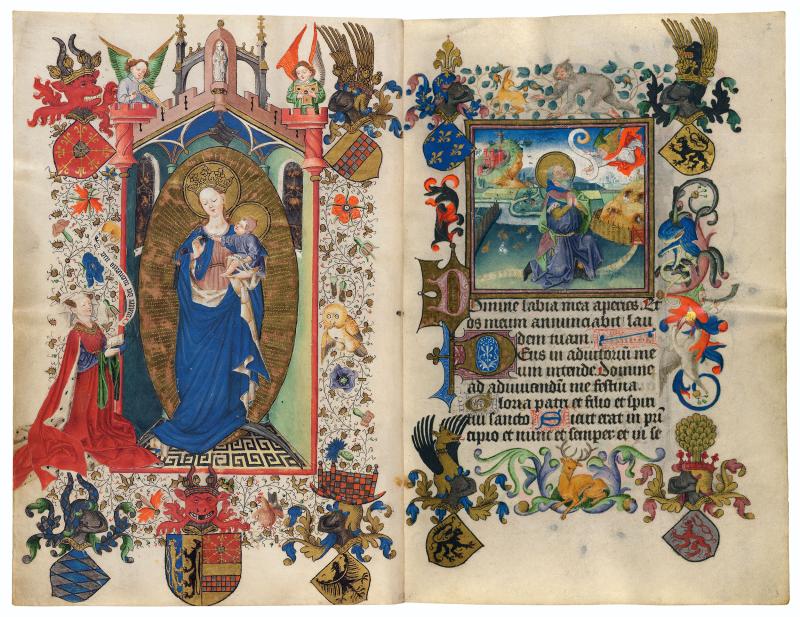
Catherine of Cleves Praying to the Virgin and Child
Annunciation to Joachim
Purchased on the Belle da Costa Greene Fund with the assistance of the Fellows and with special assistance of Mrs. Frederick B. Adams, Sr., Mrs. Robert Charles, Mr. Laurens M. Hamilton, The Heineman Foundation, Mrs. Donald F. Hyde, Mrs. Jacob M. Kaplan
Catherine's prayer book begins with a bang. The first thing one sees is Catherine herself, praying from her Book of Hours before the Virgin and Child. On the right, the narrative of the life of Mary commences with an angel's telling the Virgin's father, Joachim, that his wife is with child. The many rabbits symbolize the old man's newfound fecundity. In a parallel manner, the borders proudly proclaim Catherine's noble lineage: eight of her ancestors' arms fill the corners of the folios. Her own arms as duchess of Guelders are prominently positioned directly below the Virgin. In a heraldic act of defiance, she surmounts her arms not with her husband's crest but with the ox of her own house of Cleves.
